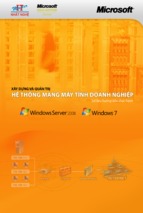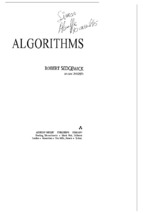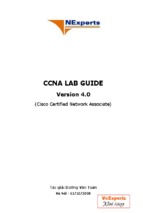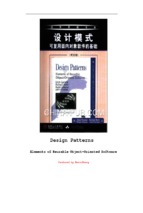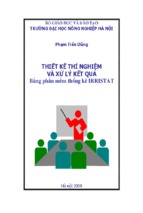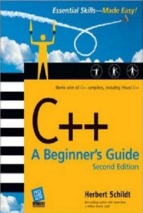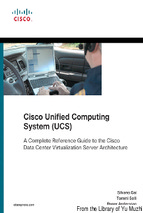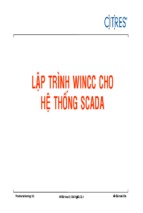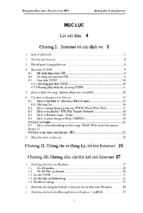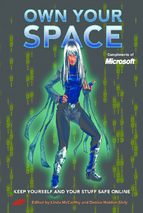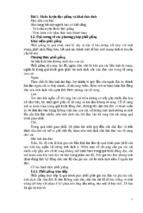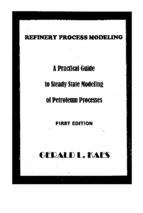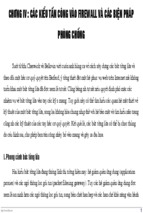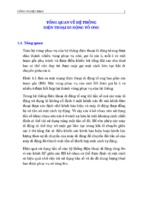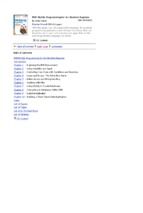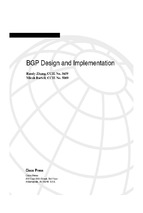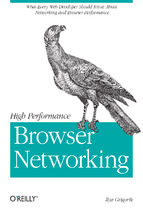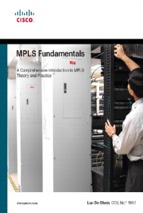From the Library of Yu Muzhi
Cisco Unified Computing
System (UCS)
A Complete Reference Guide to the Data
Center Virtualization Server Architecture
Silvano Gai
Tommi Salli
Roger Andersson
Cisco Press
800 East 96th Street
Indianapolis, Indiana 46240 USA
From the Library of Yu Muzhi
ii
Cisco Unified Computing System (UCS)
A Complete Reference Guide to the Data Center Virtualization Server Architecture
Silvano Gai
Tommi Salli
Roger Andersson
Copyright© 2010 Cisco Systems, Inc.
Published by:
Cisco Press
201 West 103rd Street
Indianapolis, IN 46290 USA
All rights reserved. No part of this book may be reproduced or transmitted in any form or by any means,
electronic or mechanical, including photocopying, recording, or by any information storage and retrieval
system, without written permission from the publisher, except for the inclusion of brief quotations in a
review.
Printed in the United States of America 1 2 3 4 5 6 7 8 9 0
First Printing May 2010
Library of Congress Cataloging-in-Publication Data
Gai, Silvano.
Unified computing system (UCS) : a data center virtualization server /
Silvano Gai, Tommi Salli, Roger Andersson.
p. cm.
Includes bibliographical references.
ISBN 978-1-58714-193-5 (pbk.)
1. Virtual computer systems. 2. Parallel processing (Electronic
computers) I. Salli, Tommi, 1977- II. Andersson, Roger, 1970- III.
Title.
QA76.9.V5G35 2010
004’.35--dc22
2010016455
ISBN-10: 1-58714-193-0
ISBN-13: 978-1-58714-193-5
Warning and Disclaimer
This book is designed to provide information about the Cisco Unified Computing System (UCS). Every
effort has been made to make this book as complete and as accurate as possible, but no warranty or fitness
is implied.
The information is provided on an “as is” basis. The authors, Cisco Press, and Cisco Systems, Inc., shall have
neither liability nor responsibility to any person or entity with respect to any loss or damages arising from
the information contained in this book or from the use of the discs or programs that may accompany it.
The opinions expressed in this book belong to the author and are not necessarily those of Cisco Systems,
Inc.
From the Library of Yu Muzhi
iii
Feedback Information
At Cisco Press, our goal is to create in-depth technical books of the highest quality and value. Each book
is crafted with care and precision, undergoing rigorous development that involves the unique expertise of
members from the professional technical community.
Readers’ feedback is a natural continuation of this process. If you have any comments regarding how we
could improve the quality of this book, or otherwise alter it to better suit your needs, you can contact us
through e-mail at
[email protected]. Please make sure to include the book title and ISBN in your
message.
We greatly appreciate your assistance.
Corporate and Government Sales
Cisco Press offers excellent discounts on this book when ordered in quantity for bulk purchases or
special sales. For more information, please contact: U.S. Corporate and Government Sales 1-800-382-3419
[email protected]
For sales outside of the U.S., please contact: International Sales 1-317-581-3793
[email protected]
Trademark Acknowledgments
All terms mentioned in this book that are known to be trademarks or service marks have been appropriately capitalized. Cisco Press or Cisco Systems, Inc. cannot attest to the accuracy of this information. Use
of a term in this book should not be regarded as affecting the validity of any trademark or service mark.
Publisher: Paul Boger
Cisco Press Program Manager: Anand Sundaram
Associate Publisher: David Dusthimer
Cisco Representative: Eric Ullanderson
Executive Editor: Mary Beth Ray
Managing Editor: Sandra Schroeder
Project Editor: Mandie Frank
Editorial Assistant: Vanessa Evans
Compositor: Studio Galou, LLC
Americas Headquarters
Cisco Systems, Inc.
San Jose, CA
Asia Pacific Headquarters
Cisco Systems (USA) Pte. Ltd.
Singapore
Europe Headquarters
Cisco Systems International BV
Amsterdam, The Netherlands
Cisco has more than 200 offices worldwide. Addresses, phone numbers, and fax numbers are listed on the Cisco Website at www.cisco.com/go/offices.
CCDE, CCENT, Cisco Eos, Cisco HealthPresence, the Cisco logo, Cisco Lumin, Cisco Nexus, Cisco StadiumVision, Cisco TelePresence, Cisco WebEx, DCE, and Welcome to the Human Network are trademarks; Changing the
Way We Work, Live, Play, and Learn and Cisco Store are service marks; and Access Registrar, Aironet, AsyncOS, Bringing the Meeting To You, Catalyst, CCDA, CCDP, CCIE, CCIP, CCNA, CCNP, CCSP, CCVP, Cisco, the
Cisco Certified Internetwork Expert logo, Cisco IOS, Cisco Press, Cisco Systems, Cisco Systems Capital, the Cisco Systems logo, Cisco Unity, Collaboration Without Limitation, EtherFast, EtherSwitch, Event Center, Fast Step,
Follow Me Browsing, FormShare, GigaDrive, HomeLink, Internet Quotient, IOS, iPhone, iQuick Study, IronPort, the IronPort logo, LightStream, Linksys, MediaTone, MeetingPlace, MeetingPlace Chime Sound, MGX, Networkers,
Networking Academy, Network Registrar, PCNow, PIX, PowerPanels, ProConnect, ScriptShare, SenderBase, SMARTnet, Spectrum Expert, StackWise, The Fastest Way to Increase Your Internet Quotient, TransPath, WebEx, and
the WebEx logo are registered trademarks of Cisco Systems, Inc. and/or its affiliates in the United States and certain other countries.
All other trademarks mentioned in this document or website are the property of their respective owners. The use of the word partner does not imply a partnership relationship between Cisco and any other company. (0812R)
From the Library of Yu Muzhi
About the Authors
Silvano Gai, who grew up in a small village near
Asti, Italy, has more than twenty-seven years of
experience in computer engineering and computer
networks. He is the author of several books and
technical publications on computer networking as
well as multiple Internet Drafts and RFCs. He is
responsible for 30 issued patents and 50 patent
applications. His background includes seven years
as a full professor of Computer Engineering, tenure track, at Politecnico di Torino, Italy and seven
years as a researcher at the CNR (Italian National
Council for Scientific Research). For the past thirteen years, he has been in Silicon Valley where in
the position of Cisco Fellow, he was an architect
of the Cisco Catalyst family of network switches,
of the Cisco MDS family of storage networking
switches, and of the Nexus family of data center
switches. Silvano teaches a course on the topics of
this book at Stanford University.
From the Library of Yu Muzhi
Tommi Salli, who was born and raised in Finland, has
close to 20 years of experience working with computers. He has extensive server and application background from companies like SUN Microsystems and
VERITAS Software, which later got bought by Symantec from where he moved to Nuova Systems that got
bought by Cisco. He has held different positions from
Sales Engineer to Technology Scouting in the office of
CTO from product management to architect and during his journey, he has been responsible for seven patent applications. He started his career in Finland, and
for the past five years, he has been in Silicon Valley and
is currently working for Cisco systems as a Technical
Marketing Engineer.
Roger Andersson was born in Stockholm, Sweden.
He has spent 20 years in the computer industry in
both Sweden and the United States. Roger’s experience
includes more than 12 years in the CLARiiON Engineering Division at EMC and five years at VERITAS/
Symantec where Roger worked as a Technical Product
Manager focusing on systems management, server, and
application automated provisioning. Roger is currently
working at Cisco as a Manager, Technical Marketing,
where he is focused on the system management aspects
of a Unified Computing System.
From the Library of Yu Muzhi
Dedications
To my wife Antonella, my daughters Eleonora and Evelina,
and my son Marco
To my wife Sari, my daughter Tara, and my son Sean
To my wife Kristine
And to our parents for their support in the early journey
From the Library of Yu Muzhi
Acknowledgments
This book is the result of a collaborative effort inside and outside Cisco®. Many
people have contributed, and in particular, the authors want to express gratitude
to the following:
Contributors and Reviewers:
■■
Arvie Martin
■■
Fausto Vaninetti
■■
Bill Minto
■■
Garth O’Mara
■■
Billy Moody
■■
Gilles Chekroun
■■
Brian Shlisky
■■
Gina Golden
■■
Burhan Masood
■■
Glenn Charest
■■
Carlos Pereira
■■
Harpreet Bains
■■
Christopher Paggen
■■
Irene Golbery
■■
Christopher Travis
■■
James Birkinshaw
■■
Claudio DeSanti
■■
Jason Chang
■■
Corey Rhoades
■■
Jason Garbis
■■
Damien Philip
■■
Jason Waxman
■■
Dan Hanson
■■
Jeff Ells
■■
Dan Lenoski
■■
Jeff Pishny
■■
Dante Malagrino
■■
Jeffrey Webb
■■
Dave Berry
■■
Jerome Simms
■■
David Cramer
■■
Joe Vaccaro
■■
David Jansen
■■
John Flood
■■
David Lawler
■■
John McDonough
■■
Diane McSweeney
■■
Jose Martinez
■■
Dinesh Dutt
■■
JR Rivers
■■
Dino Farinacci
■■
Justin Cooke
■■
Donna Helliwell
■■
Kathy Hickey
■■
Eamon O’Neill
■■
Landon Curt Noll
■■
Ed Bugnion
■■
Leslie Menegaz
■■
Eric Stephenson
■■
Leslie Xu
■■
Ezequiel Aiello
■■
Liz Stine
■■
Fabio Ingrao
■■
Louis Watta
From the Library of Yu Muzhi
Acknowledgments
viii
■■
Luca Cafiero
■■
Sunil Ahluwalia
■■
Madhu Somu
■■
Susan Kawaguchi
■■
Manoj Wadekar
■■
Suzanne Stout
■■
Mario Mazzola
■■
Tanvir Hussain
■■
Matthew Kmiecik
■■
Tjerk Bijlsma
■■
Matthew Taylor
■■
Tom Spencer
■■
Mauricio Arregoces
■■
Victor Moreno
■■
Maurizio Portolani
■■
Walter Dey
■■
Michelangelo Mazzola
■■
Wendy Payne
■■
Mike Dvorkin
■■
Mike Galles
■■
Mike Liu
■■
Page Tagizad
■■
Pamela V. Snaith
■■
Philip Manela
■■
Prem Jain
■■
Ranga Bakthavathsalam
■■
Rich Lau
■■
Richard L. Morris
■■
Richard Tattoli
■■
Robert Bourassa
■■
Robert Burns
■■
Shannon Poulin
■■
Soni Jiandani
■■
Stephen Elliot
■■
Stephen Thorne
■■
Steve Abbott
■■
Steve Lemme
Silvano’s wife Antonella has patiently reviewed the manuscript hunting for errors. Thank
You.
Finally, we would like to acknowledge Julie Totora (www.paperumbrella.com) who helped
us redraw most of the graphics.
From the Library of Yu Muzhi
Contents
xvi
Nomenclature
xvi
Preface
Chapter 1
Introduction
Data Center Challenges
Environmental Concerns—“Green”
Server Consolidation
Virtualization
Real Estate Power and Cooling
Cabling
Disaster Recovery
Network Virtualization
Desktop Virtualization
Cloud Computing
Evolution of Data Centers
Stand-Alone Servers
Scale-Up
Scale-Out
Scale-Up vs. Scale-Out
Rack-Optimized Servers
Blade Servers
Server Sprawl
Virtualization
Server Deployment Today
Unified Computing System (UCS)
Chapter 2
Server Architectures
The Processor Evolution
Sockets
Cores
Threads
Intel® Hyper-Threading Technology
Front-Side Bus
Dual Independent Buses
Dedicated High-Speed Interconnect
Intel® QuickPath Interconnect
The Memory Subsystem
SRAMs
DRAMs
SDRAMs
DIMMs
ECC and Chipkill®
1
1
2
3
4
5
5
7
8
9
10
10
11
12
12
12
13
14
15
17
18
18
23
24
24
25
27
27
28
29
30
31
33
34
34
35
36
38
From the Library of Yu Muzhi
x
Contents
Memory Ranks
UDIMMs and RDIMMs
DDR2 and DDR3
The I/O Subsystem
PCI Express®
Intel Microarchitectures
Platform Architecture
CPU Architecture
Virtualization Support
Advanced Reliability
Advanced Encryption Standard
Trusted Execution Technology
Chip Design
Chipset Virtualization Support
Intel® VT-d for Direct I/O
Intel® VT-c for Connectivity
VMDirectPath®
Chapter 3
Chapter 4
39
40
41
43
43
45
46
49
56
59
60
61
61
63
64
65
68
UCS Enabling Technologies
69
Unified Fabric
10 Gigabit Ethernet
Lossless Ethernet
Terminology
PFC (Priority-Based Flow Control)
DCBX: Data Center Bridging eXchange
Bandwidth Management
FCoE (Fibre Channel over Ethernet)
Virtualization
Server Virtualization
SR-IOV
The IEEE Standard Effort
Port Extenders and Virtualization
VNTag
Fabric Extenders
VN-Link
Memory Expansion
Speed vs. Capacity
Capacity vs. Cost
How Much Memory Is Required?
NUMA
The UCS Approach
The UCS Advantage
69
71
72
72
72
73
74
75
81
81
83
83
84
86
88
90
93
94
94
95
98
98
101
I/O Adapters
103
From the Library of Yu Muzhi
Contents
Disclaimer
The Intel® Approach
10 Gigabit Ethernet NIC Solutions
Intel® 82598 10 Gigabit Ethernet Controller (Oplin)
Support for Multi-Core CPUs
Hardware-Assisted Virtualization
Advanced Features for Storage over Ethernet
Intel® 82599 10 Gigabit Ethernet Controller (Niantic)
Improved Performance
Hardware-Assisted Virtualization
Support for DCB (Data Center Bridging)
Storage over Ethernet
Fibre Channel over Ethernet (FCoE)
Time Sync—IEEE 1588
Double VLAN
Security
Intel’s NetEffect™ iWARP Controller (NE020)
iWARP and RDMA
N2020 Architecture
Performance
Summary
Converged Network Adapters (CNAs)
Cisco® Palo
Emulex
Emulex OneConnect OCm10102-FC
FCoE Features
Ethernet Features
Functional Architecture
Deployment in UCS
Management of OneConnect UCNAs
Benefits of OneConnect UCNAs
QLogic®
8000 Series—First Generation CNA
8100 Series—Second Generation CNA
Broadcom®
BCM57711 Dual-Port 10GbE Controller
Advanced Integration
High-Performance Hardware Offload
Broadcom and UCS
Chapter 5
UCS B-Series Blade Servers
Components Overview
UCS Manager
xi
104
104
104
105
108
109
109
109
112
113
114
115
115
115
116
116
116
117
119
120
122
123
124
129
130
132
133
133
133
134
136
137
137
138
144
144
145
146
151
153
153
154
From the Library of Yu Muzhi
xii
Contents
UCS 6100 Series Fabric Interconnects
UCS 2100 Series Fabric Extenders
UCS 5100 Series Blade Server Chassis
UCS B-Series Blade Servers
I/O Adapters
Overall Organization
UCS C-Series Rack Servers
Detailed Description
UCS 6100 Series Fabric Interconnects
UCS 2104XP Fabric Extender
UCS 5108 Blade Server Chassis
Two-Socket Blade Architecture
UCS B200 Two-Socket Server
UCS B250 Extended Memory Server
Four-Socket Blade Architecture
UCS B440 Four-Socket Server
Description of Communication Flows
The Boot Sequences
Fabric Interconnect and UCSM
Fabric Extender
Baseboard Management Controller
Chapter 6
UCS C-Series Rack Servers
UCS C200
UCS C210
UCS C250
UCS C460
Processors
Adapters
Hard Disk
Management
Software
Physical Parameters
C200
C210
C250
C460
Weights
Chapter 7
UCS Manager
UCSM Overall Architecture
System Components
UCSM Is a Model-Driven Framework
154
155
156
157
159
160
161
161
161
168
172
172
179
181
182
186
187
187
189
190
190
193
194
195
199
202
207
212
213
213
219
220
220
220
220
221
221
223
223
223
227
From the Library of Yu Muzhi
Contents
Management Information Model
Available Integration Points
Interfaces
Standard (Cut-Through) Interfaces in a UCS
Standard Interfaces in a UCS
Native Interfaces in UCS
Operating Principles
Configuration Policies
Operational Policies
Global vs. Local Policies
Pools
Manual Population of Pools
Automatic Population of Pools
Service Profiles
Service Profile Templates
Organizations
Hierarchical Pool and Policy Resolution
Role-Based Access Control (RBAC)
Locales
Users and Authentication
UCSM and VMware’s vCenter Integration
Integration Architecture
Virtualization Support
Management Plane Integration
Port-Profiles
vNIC Template
Runtime Policy Resolution for Dynamic VIFs
UCS Manager and VM in GUI
Basic System Management with UCSM
Hardware Management
Example of a Chassis Discovery Process
Retirement of Hardware
Firmware Management
Firmware Download Formats
Firmware Life Cycle
Management Firmware Pack Policy
Host Firmware Pack Policy
The Stateless Computing Deployment Model
The Basic Computing Deployment Model
System Setup—Initial Setup
The Default Computing Deployment Model
The Stateless Computing Deployment Model
Requirements for Stateless Service Profiles
xiii
232
233
233
235
237
239
240
242
243
244
244
250
250
252
253
255
256
257
258
259
259
260
260
261
261
262
262
264
264
264
265
266
266
267
268
272
272
272
273
274
274
275
280
From the Library of Yu Muzhi
xiv
Contents
System Logging
Faults and Events
Audit Log
Backup and Restore of UCS Manager
Full State Backup
Configuration-Only Backup
Backing Up the UCS
Restoring a Configuration-Only Backup
Integrating with UCS
UCS Manager XML API
UCS XML API Object Naming
Method Categories
UCS Platform Emulator
Chapter 8
Third-Party Management Software
BMC®
Just-in-Time Provisioning
Embedded System Management
Business Service Provisioning
Composite Packaging
Configuration Management
Granular Access Control
Compliance
Vision for Automated and Efficient IT
CA® Management Integration with Cisco UCS
Integration Point
CA Infrastructure Management Integration
Discovery, Fault, and Service Modeling
Performance Management and Analytics
Automation
Change and Configuration Management
Service Profile and Application Templates
Automated Provisioning
Policy-Based Automation
User Self-Service
Private Cloud Deployments
EMC® Ionix Products for Cisco UCS
Unified Infrastructure Manager (UIM)
Data Center Insight (DCI)
IBM Tivoli Software Integration with Cisco UCS
Microsoft System Center
VMware vCenter
Communications
287
289
291
292
292
292
292
293
294
295
296
296
301
307
307
308
309
313
315
316
318
318
319
322
323
323
324
327
328
329
330
331
332
333
333
337
337
341
344
346
347
348
From the Library of Yu Muzhi
Contents
Configuration of the DVS
Virtual Machine Adapters
Resource Checks for DRS, HA, and FT
Chapter 9
Planning a UCS Blade Server Installation
The Owner of the UCS Domain
User Authentication
Power and Cooling
Physical Sizing and Environmental Requirements
Connectivity
Choosing the Right Cables
Twinax
Fiber
Bandwidth
OS and Application Support
Supported Storage Devices and Protocols
Planning for Redundancy
Power Supply Redundancy
I/O Redundancy
Ethernet Interfaces Redundancy
Fibre Channel Interfaces Redundancy
Bibliography
PCI Express
IEEE 802.3
Improvements to Ethernet
IEEE 802.1 Activities
FCoE
TRILL
Virtualization
Memory Subsystem
Intel® Processors
Data Centers
Green
Cloud Computing
xv
350
350
350
353
353
354
354
357
359
361
361
361
362
363
363
364
364
365
365
367
369
369
369
369
369
370
370
370
371
371
372
372
372
Glossary
373
Index
379
From the Library of Yu Muzhi
xvi
Preface
Preface
This book is the result of the work done by the authors initially at Nuova Systems and subsequently at Cisco Systems on Project California, officially known
as Cisco Unified Computing Systems (UCS).
UCS is a innovative technology platform that consolidates many traditional data
center technical skill sets into one system. For this reason, the authors, from three
very different backgrounds (and even different countries), have decided to combine their knowledge to publish this book together.
The book describes UCS from an educational view: We have tried to provide
updated material about all server components and new data center technologies,
as well as how these components and technologies are used to build a state of the
art data center server.
We wish to express our thanks to the many engineering and marketing people
from both Nuova Systems and Cisco Systems with whom we have collaborated
with during the recent years.
UCS would not have been possible without the determination of the Cisco management team. They understood the opportunity for Cisco in entering the server
market and decided to pursue it. Our gratitude goes out to them.
Nomenclature
Engineering projects are identified from inception to announcement by fantasy
names that are often names of geographical places to avoid any trademark issue.
Project California is not an exception. Project California or simply “California” is
the name of the overall systems and city names, such as Palo and Menlo, are used
to identify specific components.
Before the launch, Cisco decided to assign project California the official name of
“Unified Computing System (UCS)”, but the term California will continue to be
used informally.
From the Library of Yu Muzhi
Nomenclature
xvii
Cisco UCS Manager
The Cisco UCS Manager software integrates the components of the Cisco Unified
Computing System into a single, seamless entity. The UCS Manager is described
in Chapter 7.
Cisco UCS 6100 Series Fabric Interconnects
The Cisco UCS 6100 Series Fabric Interconnects are a family of line-rate, lowlatency, lossless 10 Gigabit Ethernet, Cisco Data Center Bridging, and Fiber
Channel over Ethernet (FCoE) switches, designed to consolidate the I/O at the
system level. The Fabric Interconnects are described in Chapter 5.
Cisco UCS 2100 Series Fabric Extenders
The Cisco UCS 2100 Series Fabric Extender provides an extension of the I/O
fabric into the blade server enclosure providing a direct 10 Gigabit Cisco Data
Center Bridging connection between the blade servers and the Fabric Interconnects, simplifying diagnostics, cabling, and management. The Fabric Extenders
are described in Chapter 5.
Cisco UCS 5100 Series Blade Server Enclosures
The Cisco UCS 5100 blade server Enclosures physically house blade servers and
up to two fabric extenders. The Blade Server Enclosures are described in Chapter 5.
Cisco UCS B-Series Blade Servers
The Cisco UCS B-Series blade servers are designed for compatibility, performance, energy efficiency, large memory footprints, manageability, and unified I/O
connectivity. They are based on Intel® Xeon® 5500 (Nehalem-EP), 5600 (Westmere-EP), and 7500 (Nehalem-EX) series processors (described in Chapter 2). The
blade servers are described in Chapter 5.
Cisco UCS C-Series Rack Servers
The Cisco UCS C-Series rack servers are designed for compatibility, performance,
energy efficiency, large memory footprints, manageability, expandability, and unified I/O connectivity. They are based on Intel® Xeon® 5500 (Nehalem-EP), 5600
(Westmere-EP), and 7500 (Nehalem-EX) series processors (described in Chapter
2). The rack servers are described in Chapter 6.
From the Library of Yu Muzhi
xviii
Nomenclature
Cisco UCS Adapters
The Cisco UCS Adapters are installed on the UCS B-Series blade servers in order
to provide I/O connectivity through the UCS 2100 Series Fabric Extenders. The
different adapters are described in Chapter 4.
From the Library of Yu Muzhi
Chapter 1
Introduction
UCS is one of the largest endeavors ever attempted by Cisco®. It is a data center
computing solution that is not a simple “me too” design, but rather a radical paradigm shift.
When we started this book, we were focused on describing UCS and pointing to
other books for the reference material. Unfortunately, after repeated visits to the
Stanford University bookstore and other prominent bookstores in Silicon Valley,
we were unable to identify any updated reference books. Consequently, we have
included this reference data ourselves.
The result is a book that consists of 50% reference material applicable to any
server architecture and 50% specific to the UCS. The reference material includes
updated processor, memory, I/O, and virtualization architectures.
UCS has a large ecosystem of partners, several of which have provided material
for this book. We thank these partners for their contributions and help in making
this book a reality.
With any book, there is always the question of how much time is spent in proofreading it and making it error free. We wanted this book to be ready for Cisco Live,
Las Vegas, July 2010. This has put a hard limit on the spell checking and improvement on graphics. If you find any error, or you have any advice for improvement,
please email them to
[email protected].
Finally, this book is neither a manual, nor a standard, nor a release note, nor a
product announcement. This book was written to explain the concepts behind
UCS to a large audience. It is not authoritative on anything; please reference the
appropriate official documents when evaluating products, designing solutions, or
conducting business. The authors do not provide any guarantee of the correctness of the content and are not liable for any mistake or imprecision.
Data Center Challenges
Data centers are the heartbeat of large corporations IT infrastructures. A typical Fortune 500 company runs thousands of applications worldwide, stores petabytes (1015) of data, and has multiple data centers along with a disaster recovery
plan in place. However, this huge-scale infrastructure often comes at a huge cost!
From the Library of Yu Muzhi


